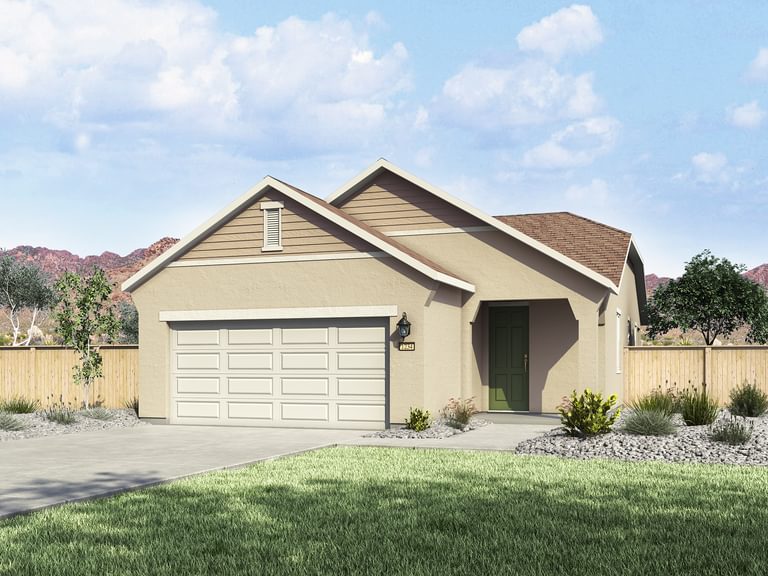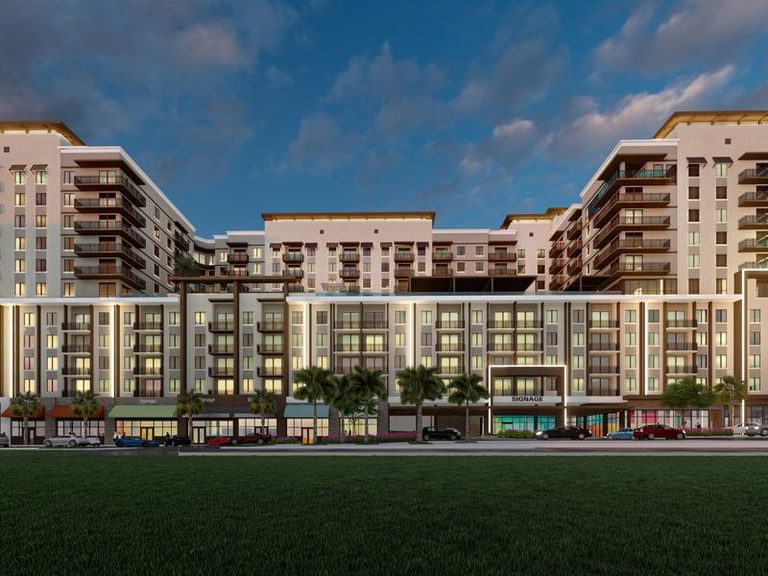Article
Homebuilders are Becoming Landlords

Lee and Audrey Morrison were excited last October as they moved into a brand-new house in a Sparks, Nev., subdivision.
It had wood floors, new carpeting, granite and marble countertops and stainless steel appliances – common fare in newly built homes these days.
But the Morrisons didn’t buy their house on Cielo Falls Drive. They leased it.
“We wanted something that was new, freshly painted and clean and (where) no one had lived there before,” said Audrey Morrison, 66, a former Huntington Beach resident. “We didn’t have to do any work. They take care of the yard. All we had to do was start living.”
The Morrisons are among dozens of families migrating to Lennar Homes’ Frontera at Pioneer Meadows project just outside Reno. Lennar completed 135 out of 236 planned new houses there, building them to rent rather than sell.
Lennar is one of at least four U.S. builders constructing new rental houses – and one of three with operations based in O.C.
They’re taking advantage of a white-hot rental market due to an increase in renters and constrained homebuying because mortgages are harder to get.
Homebuilders and market experts say also that while families tend to prefer houses, they either can’t come up with the down payment or prefer the flexibility of renting.
Meanwhile, the number of single-family rentals has been soaring.
Census figures show that 42,300 Orange County houses and 101,000 Inland Empire houses were added to the rental market from 2005 to 2014. Nationwide, nearly 3.9 million additional houses became rentals during that decade.
But most of those rental houses are in existing neighborhoods, owned by mom and pop landlords or by investment funds that snatched up foreclosures to create huge portfolios of rental houses.
“A lot of people want to buy a single-family home, but for whatever reason, they’re credit challenged,” said Jeff Roos, Lennar’s Western regional president. “There’s a great deal of demand. There’s an underserved market.”
Some homebuilders are stepping up to serve that market, with the number of U.S. houses built as rentals doubling from 2007 to 2012, numbers from the National Association of Home Builders show.
Rental house starts represented 3 percent to 6 percent of all single-family starts in the nation since 2007, up from 2 percent to 3 percent in the prior 17 years, the NAHB reported.
Irvine-based housing consultant John Burns estimated 25,000 detached homes were built to rent in 2014.
“Would you rather live in an apartment with someone above you and below you and beside you and perhaps a single car garage you walk to?” asked Spencer Rinker, co-founder and president of AHV Communities in Newport Beach, which is building more than 1,000 single-family rentals in Texas.
“Or would you rather rent a single-family home with a backyard and direct access to a two-car garage? ... We think it’s pretty straightforward.”
Some firms became landlords decades ago by building apartments. For example, William Lyon Homes set up an apartment division in the 1980s that later branched off as an independent company, now called Lyon Living.
Others are new landlords but are building apartments, not houses.
Lennar, for example, has a pipeline of $6 billion to build 21,000 apartments across the country. Irvine builder MBK Homes owns or is building nearly 500 apartments in Corona and Riverside.
But housing consultant Burns argued in an August report that homebuilders are missing out on 10 percent of the housing demand, allowing existing homes to serve tenants who prefer rental houses to apartments.
Some don’t qualify for a mortgage, he said. Others want the flexibility of being able to move or would rather spend what they earn rather than save for a down payment.
“Clearly there is a subset of renters who will pay a premium to rent new,” Burns wrote. “If it works for apartment developers, why has there not been much attempt to build single-family homes for rent? Those days are now ending.”
Homebuilders note that new rental house subdivisions have advantages over rental house portfolios amassed by investment funds such as Blackstone Group’s Invitation Homes, which reportedly has 48,000 single-family rentals.
While those landlords have hundreds of homes spread throughout a metro area, the builders can cluster their rentals together, making them easier to rent out, maintain and repair.
Rinker noted that a portfolio landlord will have to pay high bills for each stopped-up toilet, since a plumber has to drive across town to make repairs.
“You don’t have the efficiency of having the maintenance person on-site,” Rinker said. “(And) you have newer construction, so there’s less deferred maintenance.”
Building new rental houses can’t be done everywhere, builders said. Land and construction costs need to be in line with rents in communities with strong employment, Rinker said. Land costs in Orange County and much of Southern California, for example, make difficult if not impossible to build rental houses here.
Lee and Audrey Morrison owned and rented several houses before moving from Winnemucca, Nev., to the Reno area for Lee’s job managing safety and security at gold mines.
But they didn’t want to buy since they don’t necessarily want to stay in Reno when Lee retires.
“We don’t care for apartment living at all. We don’t care for the close proximity and the noise and the paper-thin walls,” said Lee, 66.
The Morrisons pay $1,984 a month for their 2,100-square-foot, one-story house, which they share with their Imperial Shih Tzu puppy, Madelyn. The management is OK with hanging pictures on the walls and upgrading locks and it takes care of the lawn and shrubs.
“It’s all taken care of,” Lee said. “It’s a brand-new house. ... It suited our needs perfectly.”
***
Homebuilders who are becoming landlords
• Lennar, the No. 2 U.S. builder with its Western U.S. headquarters in south Orange County, began experimenting with rental houses last year, building the 236-house Frontera at Pioneer Meadows project just outside Reno.
Rental houses are an outgrowth of Lennar’s massive apartment construction initiative launched in 2011. Company officials say Lennar has a pipeline of $6 billion to build 21,000 apartments.
So far, the company completed five apartment complexes – including the new, 200-unit Malden Station near the Fullerton train depot. Twenty-six more are under construction from Boca Raton, Fla., to Seattle, 10 of which will open this year, said Todd Farrell, president of Lennar Multifamily Communities.
But not everyone wants apartments. Lennar CEO Stuart Miller told analysts in a conference call last year that the inability of families to get a mortgage is developing an appetite for single-family rentals. Miller called Frontera an experimental hybrid drawing on its homebuilding and rental expertise.
“If the rental concept doesn’t work as well as we’d like, we can always convert to a for-sale platform,” Miller said.
Lennar Western Regional President Jeff Roos said Frontera averages two leases per week since opening in March 2015. The company is pondering a plan to build more rental houses in Gossamer Grove, a master-planned development outside Bakersfield.
• AHV Communities in Newport Beach is involved in the construction of 1,000 rental houses in the Austin, Texas, and San Antonio areas. Two partners with a background in apartments and in finance formed the company in 2013 to tap into the unfilled demand for rental houses. The company is targeting millennials starting families and baby boomers looking to downsize into maintenance-free living.
Co-founder and President Spencer Rinker said his projects include all the amenities found in luxury apartments, including clubhouses with fitness centers, pools and walking trails. The company completed 50 houses so far, with the rest either still going through approvals or land grading.
The company hopes to expand eventually to Nashville, Tenn., North Carolina and possibly Southern California, although high land costs here make it challenging to build houses for rent.
“We have a lot of people who are choosing to rent for its flexibility and not having to come up with a down payment,” Rinker said.
• RSI Communities, a Newport Beach firm that builds walls and other housing components in factories, then assembles them on-site, has about 300 rental houses in three projects in San Antonio. AHV has an interest two of those projects, Vikery Grove and Village at Heritage Cove. The company plans to build 800 to 900 rental houses in central Texas by 2018, said Todd Palmaer, RSI president and CEO.
“We’ll build the homes as fast as we can build them, and then we’ll lease them out,” Palmaer said.
• Camillo Properties in Sugar Land, Texas, has built more than 3,000 houses, townhomes and duplexes to rent in and around Houston, San Antonio, Dallas and Fort Worth.
The firm is a division of Houston-based homebuilder Legend Homes and is affiliated with Triton Rental Homes.
“Enjoy the comfort and convenience of your new rental home,” the firm’s Facebook page says. “No more noisy neighbors above and below you, and no more obscene pool parties at all hours of the night!”
In addition, other firms are following Lennar’s lead by building apartments.
• MBK Homes of Irvine, builder of for-sale townhomes and houses in Southern California and the Sacramento area, recently began building apartments, with plans to build more than 2,000 units.
The firm, a division of the Japanese conglomerate Mitusi & Co. Ltd., completed a 288-unit apartment complex in Corona called Palisades and has a 187-unit complex called Metro Gateway under construction in Riverside.
Company president Tim Kane said MBK is responding to a housing shortage caused by a slowdown in building during the recession. Rentals give homebuilders “a hedge in the housing market,” Kane said. “Apartments are very stable.
“The occupancy rate in Southern California, even during the recession at the lowest point, was 92 percent. It indicates there’s a need. And rents are very stable. They don’t fluctuate much.”
Contact the writer: 714-796-7734 or jcollins@ocregister.com



